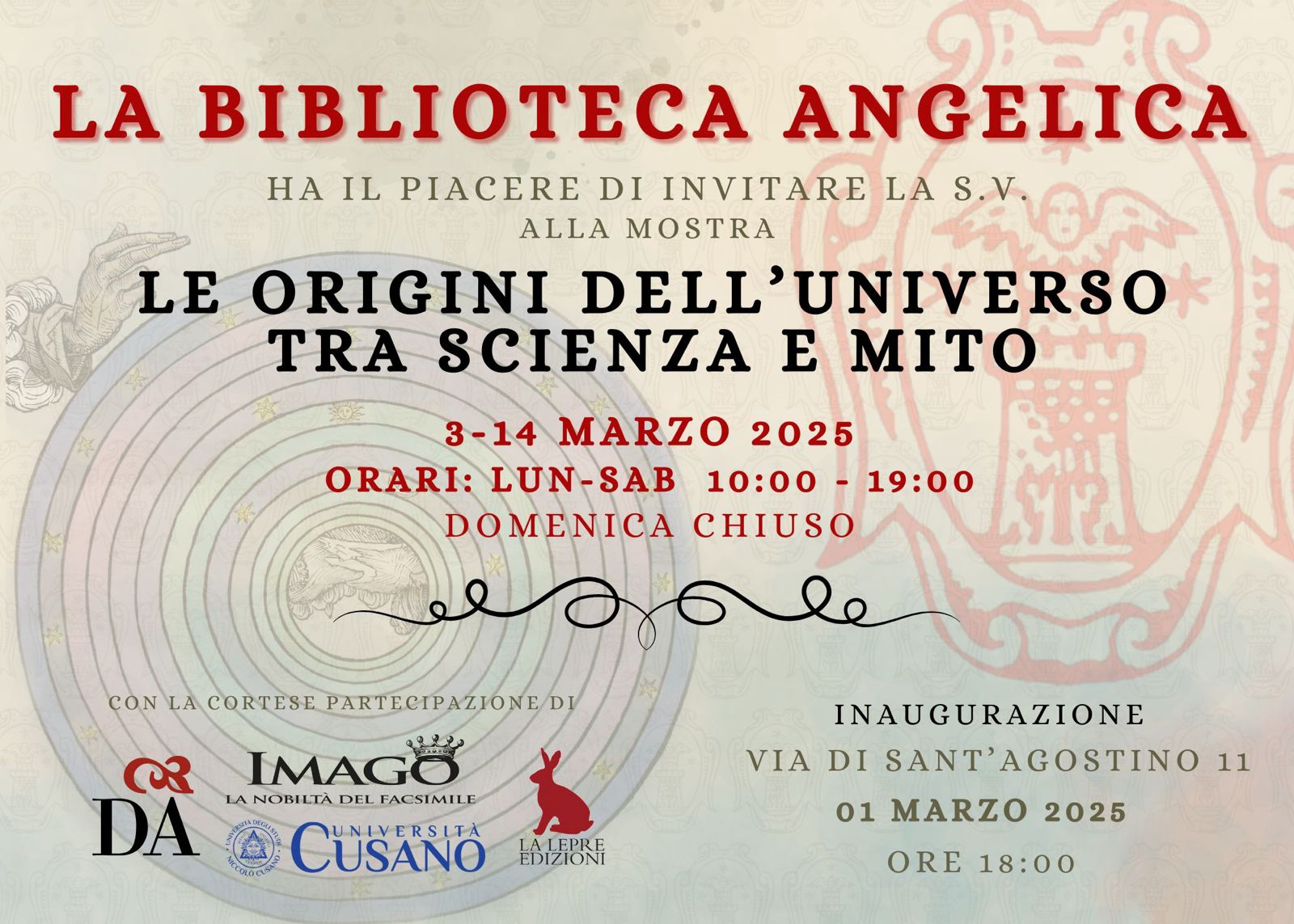The origins of the Universe between science and myth
As long as writing has existed, man has left a testimony of his attempt to interpret the origins and structure of the Cosmos in images, searching for a trace of it reflected in the microcosm of the human body and in the three kingdoms of Nature, and projecting myths and legends into the starry sky. This small exhibition draws on the extraordinary heritage of the Angelica Library’s ancient collection, rich in over 24,000 manuscripts and 100,000 printed volumes, published between the 15th and 18th centuries, from Kunrath to Kircher, from Copernicus to Tycho Brahe and Galileo, from Luca Pacioli to Cesare Ripa. Some original editions of the books that marked the evolution of the conception of the Universe between the 16th and 18th centuries, as well as books illustrating the earlier Aristotelian and Ptolemaic image of the cosmos, belong to the library’s holdings.
As long as writing has existed, man has left a testimony of his attempt to interpret the origins and structure of the Cosmos in images, searching for a trace of it reflected in the microcosm of the human body and in the three kingdoms of Nature, and projecting myths and legends into the starry sky.
This small exhibition draws on the extraordinary heritage of the Angelica Library’s ancient collection, rich in over 24,000 manuscripts and 100,000 printed volumes, published between the 15th and 18th centuries, from Kunrath to Kircher, from Copernicus to Tycho Brahe and Galileo, from Luca Pacioli to Cesare Ripa.
Some original editions of the books that marked the evolution of the conception of the Universe between the 16th and 18th centuries, as well as books illustrating the earlier Aristotelian and Ptolemaic image of the cosmos, belong to the library’s holdings.

